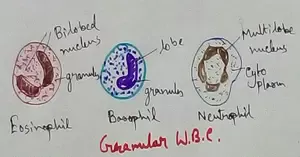The Sun and the Moon
In the sun and the moon we will learn about the sun and its light, shadows of different object, moon and the conditions on the moon.
Sun and its light:
The sun is a big ball of fire. It gives us light and heat. The heat of the sun dries up wet clothes and water in lakes, rivers or seas. The heat of the sun helps to ripen fruits. The sun is very big but looks small because it is very far from us. We also gets light from candles and electric bulbs. They are called artificial sources of light.
Shadows and their length:
When light cannot pass through an object, a shadow is formed. A shadow is formed on the opposite side of light. Shadows differ in size. Dark shape formed when an object blocks the light falling on it. They are short at noon when the sun is above our head. They are long in the morning and in the evening.
Moon
and the conditions on the moon:
The moon is the nearest neighbour of our earth. People on earth have always been attracted to the moon. Moon is a heavenly body that moves around the earth and has no light of its own. The moon goes round the earth and we see different shapes of the moon on different days. The moon does not give off its own light. It shines when the light of the sun falls on it. There is no air or water on the moon. So, there is no life on the moon. But man has always dreamed of going to the moon. In 1965, Apollo – 11 mission reached the moon. Neil Armstrong was the first man to step on the moon. They brought back photographs of the moon, soil and rocks. We have come to know of many new things about the moon since then. Thus, we have learnt about the sun and the moon.
From The Sun and the Moon to HOME PAGE
Recent Articles
-
Formed Elements of Blood | Erythrocytes | ESR |Leukocytes |Neutrophils
Jan 15, 26 01:25 AM
Formed elements formed elements are constitute about 45 % of blood afeias haematocrit value packed cell volume mostly of red blood corpuscles and are of 3 types- erythrocytes, leukocytes and blood pla… -
What Is Plasma? | Blood Plasma | Proteins | Nutrients | Cholesterol
Nov 07, 25 10:29 AM
Blood is a mobile fluid which is a connective tissue and is derived from the mesoderm like cell any other connective tissue. Colour of blood is reddish and that flows inside the blood vessels by means… -
Disorders of Respiratory System | Tuberculosis | Pleurisy | Emphysema
Oct 28, 25 11:39 PM
Tuberculosis is very common disease and is caused by a type of bacteria called Mycobacterium tuberculosis. This disease causes different trouble in the respiration and infection of several parts of th… -
Regulation of Respiration | Respiratory Centres | Inspiratory Area |
Oct 14, 25 12:13 AM
Respiratory Centre is the area that controls the rate of respiration and it is observed to be located in medulla oblongata and pons. Respiratory Centre has the following will dispersed components like… -
Explain Transport of Gases | External Respiration | Tissue Respiration
Oct 09, 25 11:35 PM
In humans gaseous exchange is completed in the following ways the steps are - External Respiration or Breathing - Breathing in false taking in of Oxygen and giving out of carbon dioxide in the body. M…





New! Comments
Have your say about what you just read! Leave me a comment in the box below.